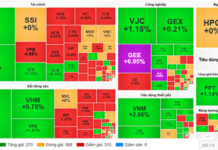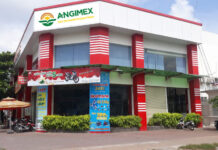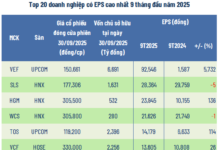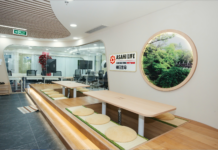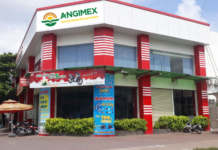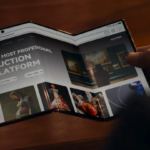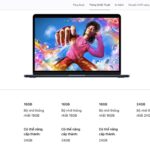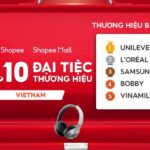
The global smartphone market is dominated by Apple and Samsung. In some countries, the two companies have a combined market share of over 70%, with Apple almost always taking more than half of the market.
However, the story is not the same worldwide. There are countries that do not worship the iPhone and instead favor Samsung, or even opt for Chinese brands.
This reflects that an expensive and famous phone is not always the criteria for every country or continent; it also depends on the budget or simply personal preference.

North America
Most popular brands:
Apple: 51.2%
Samsung: 23.74%
Google: 12.9%
Motorola: 3.2%
Xiaomi: 1.79%
North America, home to Apple’s headquarters, is naturally dominated by the iPhone. Apple takes the lion’s share of sales in the region.
Samsung comes in second with its Galaxy S series and a diverse range of mid-range and affordable phones. The latter are more popular outside the US and Canada.
Looking at the three most populous countries in North America, we see that both the US and Canada favor the iPhone over any other device. The same is true for Mexico, although Apple’s market share seems lower there. People tend to buy Samsung phones and even Motorola, known for its affordable offerings.
USA: Apple (51.07%), Samsung (23.77%), Google (14.6%)
Canada: Apple (60.38%), Samsung (24.23%), Google (6.56%)
Mexico: Apple (32.16%), Samsung (22.96%), Motorola (13.11%)
Europe
Most popular brands:
Apple: 36.53%
Samsung: 31.12%
Xiaomi: 12.95%
HUAWEI: 2.82%
OPPO: 2.36%
The data from Europe paints a different picture from North America. While Apple and Samsung remain at the top, Apple’s market share is significantly lower, and Samsung is hot on its heels. This could be due to differing personal preferences between the regions and a more fragmented buyer market due to the higher number of countries and diverse user base.

This hypothesis is supported by the presence of budget phone manufacturers in the list — Xiaomi, HUAWEI, and OPPO — attracting consumers with limited budgets.
The variation in purchasing power is also evident in the data from the three countries below. While in the UK, Apple, with its premium phones, takes almost half the market, in Germany, known for its high standard of living and frugal population, Apple’s share drops to around 37%. On the other hand, affordable Xiaomi takes a large chunk of the market.
In Spain, which is not an economic powerhouse like the UK or Germany, Apple comes in third, while Xiaomi leads the way. This could be due to personal preferences and successful brand promotion.
UK: Apple (50.81%), Samsung (30.86%), Google (4.55%)
Germany: Apple (37.01%), Samsung (33.88%), Xiaomi (12%)
Spain: Xiaomi (28.26%), Samsung (27.09%), Apple (23.48%)
Asia
Most popular brands:
Apple: 17.61%
Samsung: 17.42%
Xiaomi: 14.1%
Vivo: 10.76%
OPPO: 9.19%
There’s no change in the top two smartphone brands in Asia, but the market share is very different from Europe and North America. Apple only narrowly leads Samsung, closely followed by Chinese brands — Xiaomi, Vivo, and OPPO.
Looking at specific countries, Japan stands out, with almost 60% of users choosing iPhones. This is not surprising, as the Japanese are known for their love of technology and their penchant for the newest and most exciting gadgets.
However, in India, Chinese brands lead the way, offering consumers more affordable options.
So, while Apple is king in Asia overall, each country has its own story, with some favoring cheaper alternatives.
Thailand: Apple (31.09%), Samsung (21.31%), OPPO (13.86%)

South America
Most popular brands:
Samsung: 17.61%
Motorola: 17.42%
Apple: 14.1%
Xiaomi: 10.76%
Transsion: 9.19%
The smartphone market in South America is quite different from the other continents mentioned above. While Samsung leads the region, Motorola comes in second. This is the most surprising region, as Apple only comes in third, even behind Samsung. This is understandable, as many in the region tend to buy affordable phones instead of expensive ones like the iPhone.
The list of the top five companies also includes Xiaomi and Transsion, the latter known for its Tecno brand, which focuses on extremely cheap phones.
Transsion has a higher market share in some South American countries than others, and it is doing quite well in Venezuela, coming in second place.
Interestingly, Brazil favors Samsung over the iPhone, with Galaxy devices leading the way while the iPhone is almost non-existent on the list. Motorola is especially popular in Brazil, which is one of the reasons why many Motorola phones launch there first before reaching other markets.
Brazil: Samsung (37.22%), Motorola (21.55%), Xiaomi (17.7%)
Argentina: Samsung (47.59%), Motorola (26.46%), Apple (13.44%)
Venezuela: Xiaomi (22.58%), Transsion (22.49%), Samsung (17.41%)
Africa
Most popular brands:
Transsion: 51%
Samsung: 19%
Xiaomi: 12%
Realme: 5%
OPPO: 4%
According to Canalys, Transsion is king in Africa. The company has several popular sub-brands, such as Tecno, Itel, and Infinix. Even if we break it down by brand, the company would still be number one, as Tecno alone has a larger market share than Samsung, the second brand on the list.
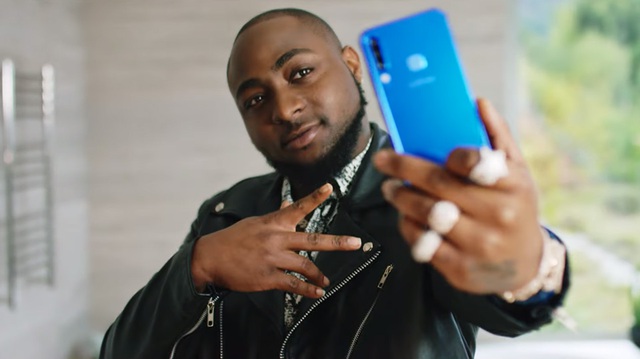
Transsion is known for its affordable handheld devices, which are in high demand in Africa. However, living standards and purchasing power vary greatly across the region, so data from individual countries can differ significantly.
For example, Samsung remains king in some countries like Morocco and Kenya, while Apple makes it into the top three in many others, according to Statcounter.
Morocco: Samsung (33.03%), Xiaomi (18.84%), Apple (18.27%)
Nigeria: Transsion (47.70%), Samsung (11.96%), Apple (9.49%)
Kenya: Samsung (26.31%), Transsion (25.11%), Oppo (8.6%)
Oceania
Most popular brands:
Apple: 51%
Samsung: 19%
Google: 12%
OPPO: 5%
Xiaomi: 4%
Apple takes the top spot with an impressive market share. Samsung comes in second but lags far behind its biggest rival, while Google is third. The conclusion is similar to the previous regions: the higher the standard of living in a region, the more people tend to buy expensive phones like the iPhone. Apple’s market share is even higher in Australia, at 56%.
The data shows that in New Zealand, one of the largest countries in the region, the top three companies are the same, but the market share is quite different.
Australia: Apple (56.68%), Samsung (26.33%), Google (7.44%)
New Zealand: Apple (38.79%), Samsung (31.82%), Google (19.18%)
The Ultimate MacBook Memory Upgrade: Apple Phases Out 8GB RAM Models
Apple is taking its MacBook range to the next level, with an impressive new standard for memory. All current MacBook models will now boast a starting RAM of 16GB, offering powerful performance and seamless multitasking right out of the box. This upgrade ensures that creative professionals, power users, and everyday enthusiasts alike can tackle demanding tasks and run resource-intensive applications with ease. It’s a significant step forward, setting a new benchmark for portable computing and delivering an exceptional experience that keeps up with the most demanding users.
Uncovering the Counterfeit Phone Ring: Busting the Fake Documentation Syndicate
Counterfeit phones are a scourge on the market, and the authorities in Ha Tinh province have taken a stand. Seven individuals have been arrested and charged for their involvement in a scheme to forge official documents and peddle fake phones. The ringleaders are now behind bars, thanks to the diligent work of local law enforcement.

